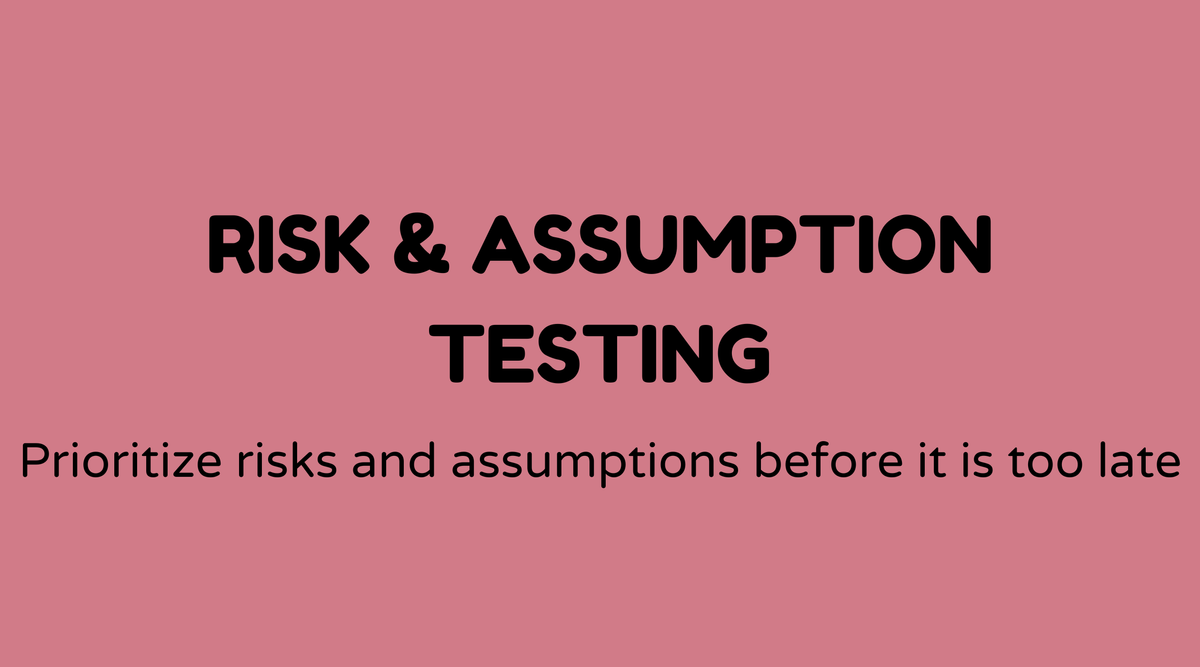Risk & Assumption Mapping

Overview of Risk & Assumption Mapping Workshop:
Welcome to the Risk & Assumption Mapping Workshop! This is not a typical meeting where you'll sip coffee and watch the minutes pass. Instead, it’s an engaging session focused on identifying, evaluating, and planning for potential obstacles and unfounded assumptions that may hinder your project. Think of it as gaining foresight into challenges with a detective's lens. You'll come away with a clear understanding of what could go awry and, importantly, how to address those issues.
Why Risk & Assumption Mapping Matters:
Grasping the importance of this workshop is essential. In today’s fluctuating markets, being aware of potential risks and scrutinizing your assumptions is vital. Companies often struggle because they overlook upcoming threats or move forward based on unreliable assumptions. By mapping these elements out, teams can foresee and alleviate challenges, leading to smoother implementations and increased project success rates. It functions as a safeguard for your plans.
What is Risk & Assumption Mapping:
At its essence, Risk & Assumption Mapping is a systematic technique to identify and rank the risks associated with any project. This method assesses both internal project beliefs and external uncertainties. Imagine navigating through unknown territory—this provides the necessary guidance. You not only compile a list of potential risks but also critically evaluate your assumptions. You’re identifying weaknesses within your project framework, enabling you to strengthen them before issues arise.
How do You Do Risk & Assumption Mapping:
Curious about the process? Here’s how to proceed. First, assemble your project team—a blend of decision-makers, planners, and implementers. Start by pinpointing core beliefs about the market, product, and execution (think of these as traps to avoid). Next, brainstorm all conceivable risks. Encourage participants to view these from various perspectives—financial, operational, market-related, and environmental.
Once you’ve created a list, plot the risks on a matrix with impact versus likelihood to prioritize them. The workshop isn’t complete without developing risk management strategies. This involves deciding how to prevent, reduce, transfer, or accept each risk. Keep the atmosphere lively with active participation, promote open discussions, and ensure a clear actionable plan.
Sample Agenda of Risk & Assumption Mapping Workshop:
Here's a sample agenda to give you an idea of how your day might unfold:
| Time | Activity |
|---|---|
| 9:00 AM | Introduction & Workshop Objectives |
| 9:30 AM | Brainstorm Session: Listing Assumptions |
| 10:15 AM | Coffee Break |
| 10:30 AM | Identifying Risks Brainstorm |
| 11:15 AM | Risk Prioritization Exercise |
| 12:00 PM | Lunch Break |
| 1:00 PM | Developing Mitigation Strategies |
| 2:30 PM | Action Plan Creation |
| 3:00 PM | Workshop Wrap-Up & Roundtable Discussion |
Examples of Risk & Assumption Mapping:
Let’s discuss some practical examples. In software development, organizations use risk mapping to proactively identify potential technical issues. Likewise, marketing teams might apply assumption mapping to challenge the belief that their target demographic behaves in a specific way, thereby avoiding expensive campaign mistakes. This approach emphasizes being proactive rather than reactive.
FAQs:
What’s the main goal of a Risk & Assumption Mapping Workshop?
The primary purpose is to identify and prioritize risks related to a project while simultaneously questioning key assumptions to develop a solid planning strategy.
How often should teams conduct these workshops?
Ideally, before launching any major project and regularly during long-term projects to reassess risks and confirm assumptions as conditions evolve.
What’s the difference between a risk and an assumption?
A risk involves uncertainty with possible adverse outcomes. An assumption is a belief or statement accepted without proof, which could also lead to risks if proven incorrect.
Who should attend this workshop?
Key stakeholders, decision-makers, project managers, and team members involved in execution should all participate to provide diverse perspectives.
How long does a typical Risk & Assumption Mapping Workshop last?
Depending on the project’s complexity, workshops usually last anywhere from half a day to a full day.
Can this workshop format cater to remote teams?
Certainly! With tools like Zoom and Miro, you can efficiently conduct these workshops online, ensuring everyone’s voice is represented regardless of their location.



